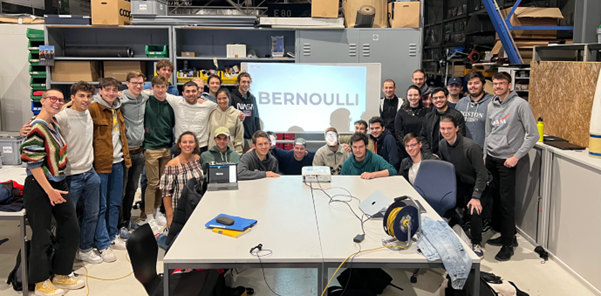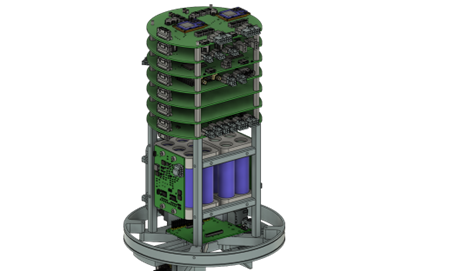BERNOULLI Hybrid Rocket Team with Guided Recovery
The Team
Our team BERNOULLI is made up of more than 50 passionate undergraduate and graduate students from various disciplines such as Engineering, Natural Sciences and Business Management. We are determined to design and construct a sounding rocket in our free time to win the European Rocketry Challenge 2023!

The inspiring tale of our predecessor team - HELVETIA - can be found here. (https://www.youtube.com/watch?v=We2vsb3sngs)
Our Mission
Our mission is threefold: First, we aim to build upon and refine the heritage of rockets, engines and recovery systems that have been developed by our association in order to combine their technologies into a single powerful rocket. Secondly, We aim to successfully launch a 3kg payload containing a muon detector, to determine trajectories of cosmic muons, carried by a 3U Cubesat embedded in the nosecone of the rocket up to an altitude of 9'000 metres and safely recover it. Lastly, and most importantly, we seek to work together, learn and grow as a team.

The Technology
We are currently building a stack of PCBs for the avionics of BERNOULLI. The PCBs are crucial to the success and safety of this mission. They will take care of telemetry, GPS localization, recovery systems, launch operations, flight computing and live streaming, while also being equipped with redundancy systems that guarantee reliability in case one component fails.

We’re implementing a guided recovery system to ensure a safe and controlled return of our rocket after launch. The parachute is deployed at the rocket’s apogee (highest point of its flight), and a model predictive controller then takes over the steering of the parachute, using algorithms running on the microcontrollers to predict the rocket’s trajectory and make corrections to its attitude and velocity in order to safely land the rocket. This system ensures that our rocket is easily recoverable and completely intact after the landing.
The entire project gives us an amazing opportunity to develop our engineering skills! We must design circuits that fit all necessary electronics within tight space constraints and find solutions for power management under uncertain conditions, such as limited battery lifespan and unpredictable heat exposure during launch. We also have to make sure our designs meet competition standards regarding safety and redundancy.
On top of that, this project provides us with a great chance to work on software development, as we must program several microcontrollers responsible for controlling actuators and valves on board the rocket during launch operations or state estimation algorithms for ascent trajectory calculations. We also have to handle communication protocols between ground station and the telemetry board, which allows for remote monitoring throughout the mission execution process for real-time data acquisition. Finally, we must design user interfaces that even non-specialists can easily use to control complex processes without compromising safety or data accuracy - making it much easier for everyone involved in launch operations.
Apply for sponsorship >>- Comments(0)
- Likes(0)
















